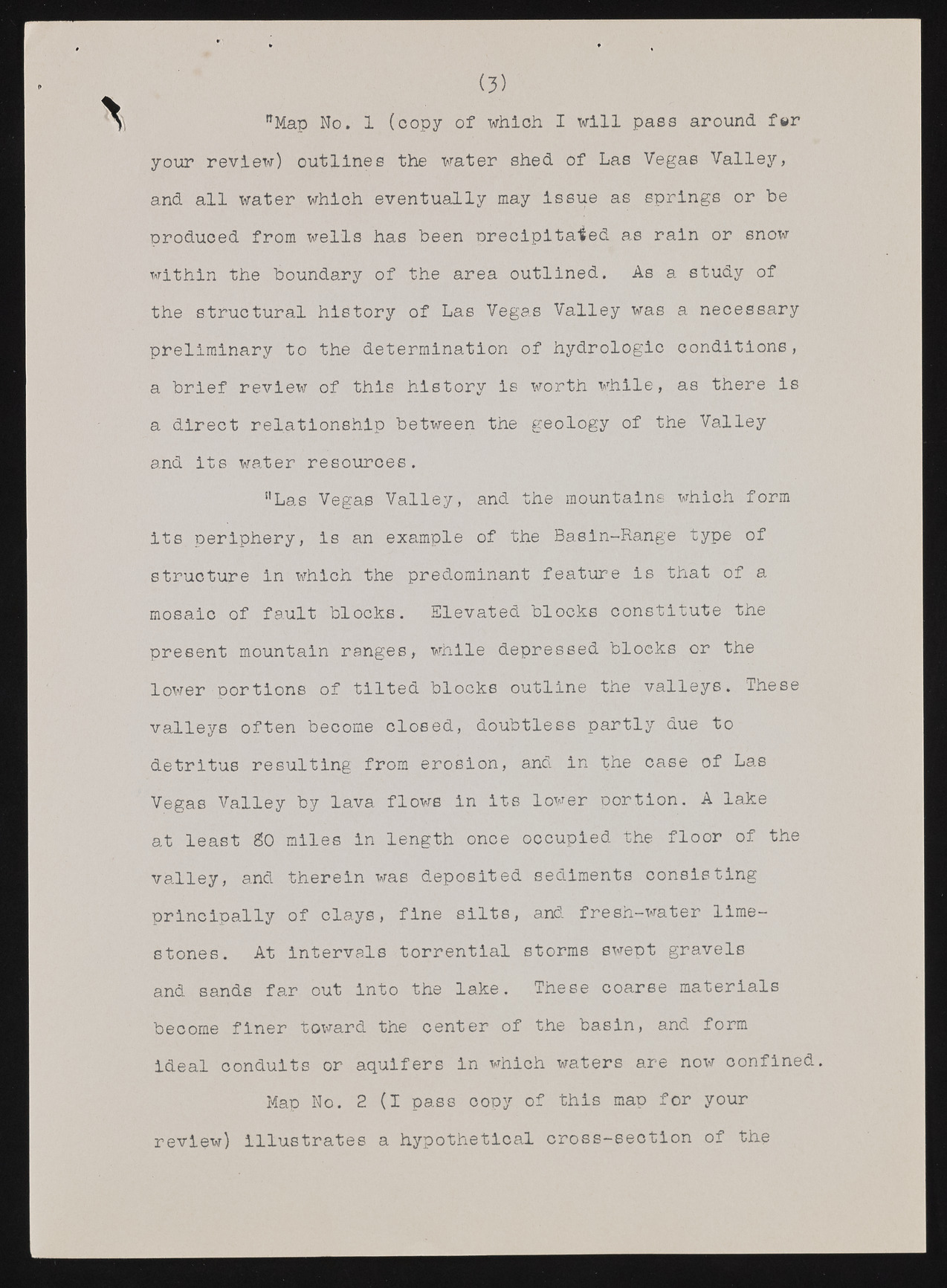Copyright & Fair-use Agreement
UNLV Special Collections provides copies of materials to facilitate private study, scholarship, or research. Material not in the public domain may be used according to fair use of copyrighted materials as defined by copyright law. Please cite us.
Please note that UNLV may not own the copyright to these materials and cannot provide permission to publish or distribute materials when UNLV is not the copyright holder. The user is solely responsible for determining the copyright status of materials and obtaining permission to use material from the copyright holder and for determining whether any permissions relating to any other rights are necessary for the intended use, and for obtaining all required permissions beyond that allowed by fair use.
Read more about our reproduction and use policy.
I agree.Information
Digital ID
Permalink
Details
More Info
Rights
Digital Provenance
Publisher
Transcription
(3) ffMap No. 1 (copy of which I will pass around f«r your review) outlines the water shed of Las Vegas Valley, and all water which eventually may issue as springs or be oroduced from wells has been precipitated as rain or snow within the boundary of the area outlined. As a study of the structural history of Las Vegas Valley was a necessary preliminary to the determination of hydrologic conditions, a brief review of this history is worth while, as there is a direct relationship between the geology of the Valley and its water resources. "Las Vegas Valley, and the mountains which form its periphery, is an example of the Basin-Range type of structure in which the predominant feature is that of a mosaic of fault blocks. Elevated blocks constitute the present mountain ranges, while depressed blocks or the lower portions of tilted blocks outline the valleys. These valleys often become closed, doubtless partly due to detritus resulting from erosion, and in the case of Las Vegas Valley by lava flovrs in its lower portion. A lake at least BO miles in length once occupied the floor of the valley, and therein was deposited sediments consisting principally of clays, fine silts, and fresh-water limestones. At intervals torrential storms swept gravels and sands far out into the lake. These coarse materials become finer toward the center of the basin, and form ideal conduits or aquifers in which waters are now confined. Map No. 2 (I pass copy of this map for your review) illustrates a hypothetical cross-section of the

